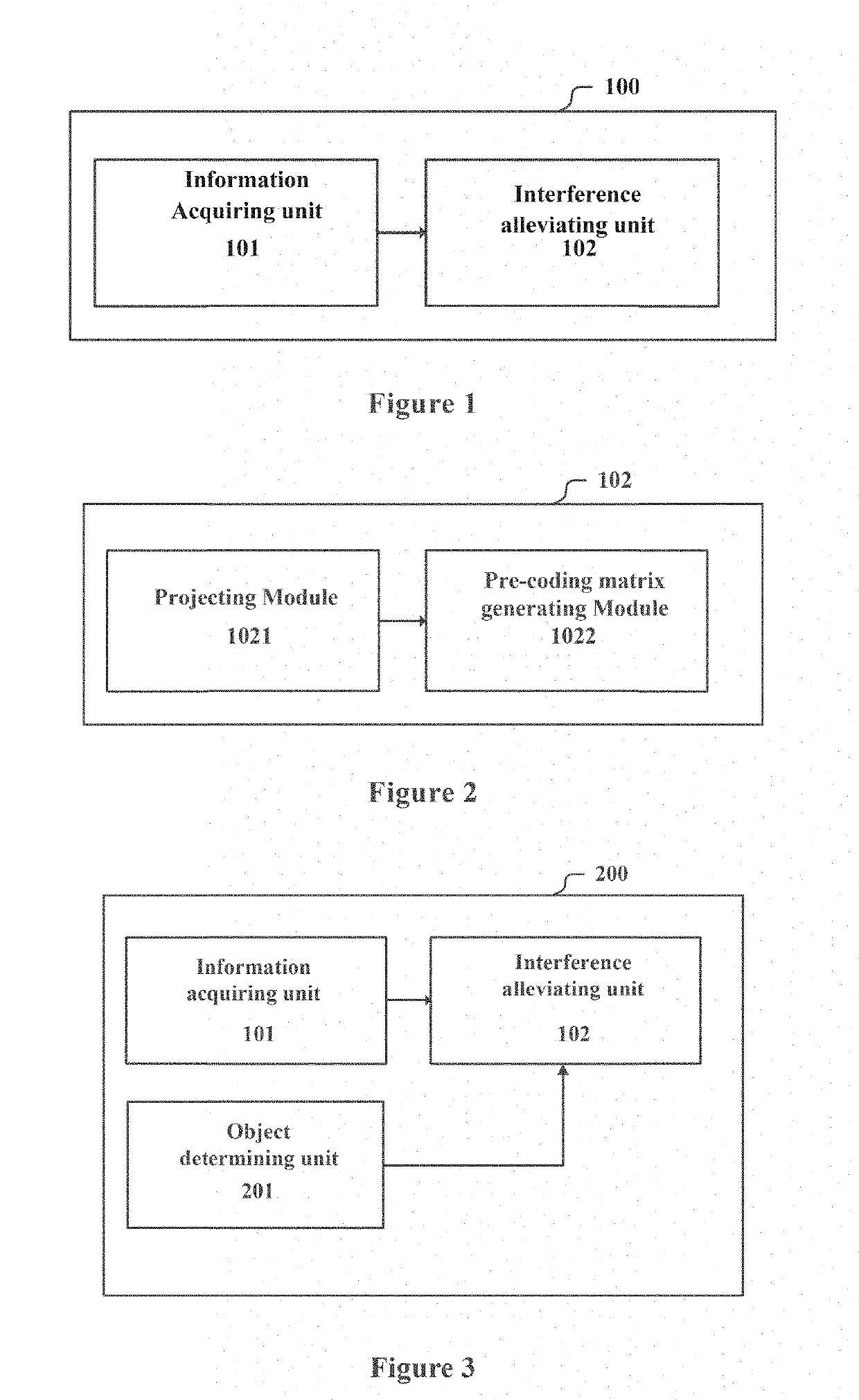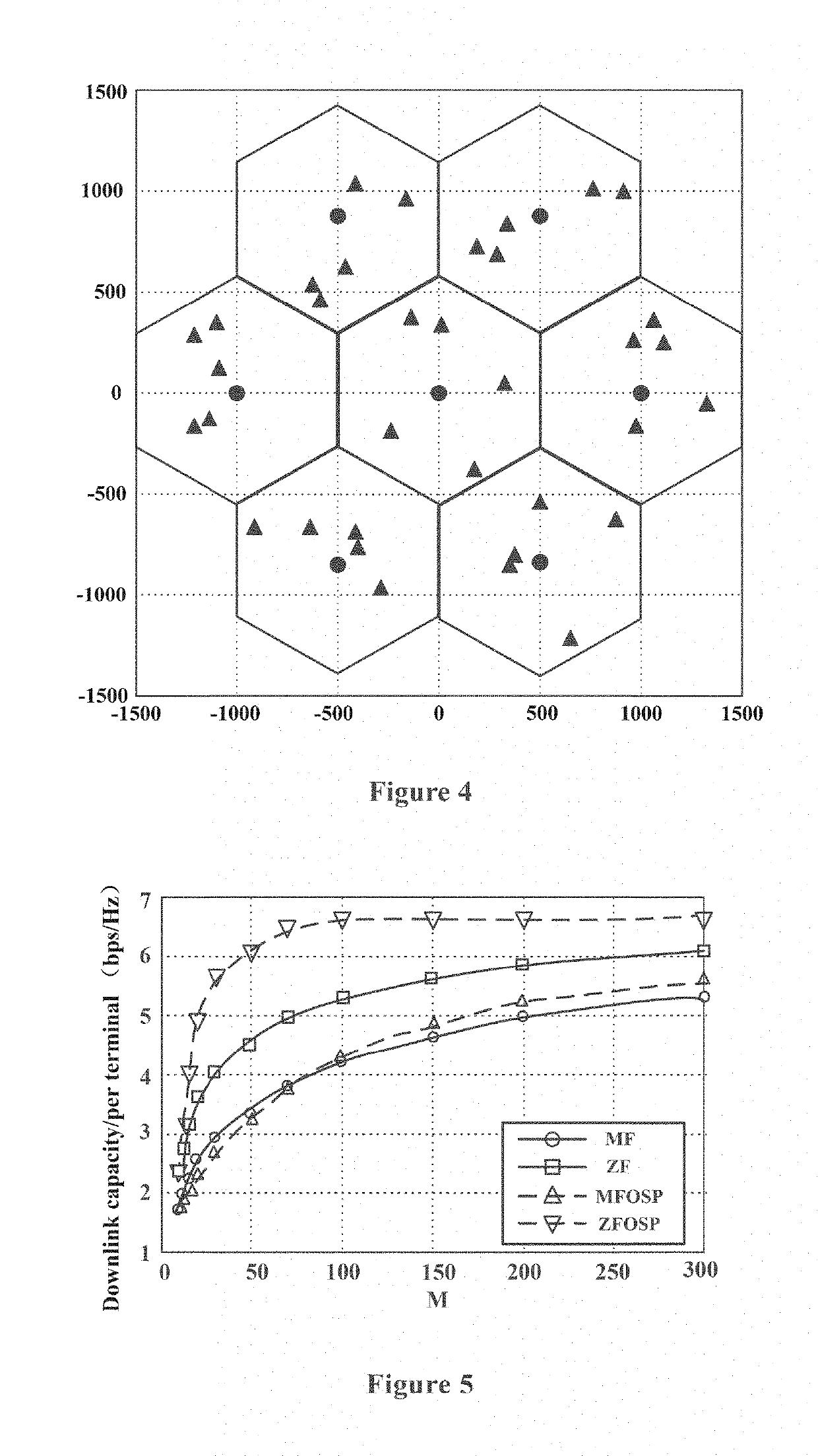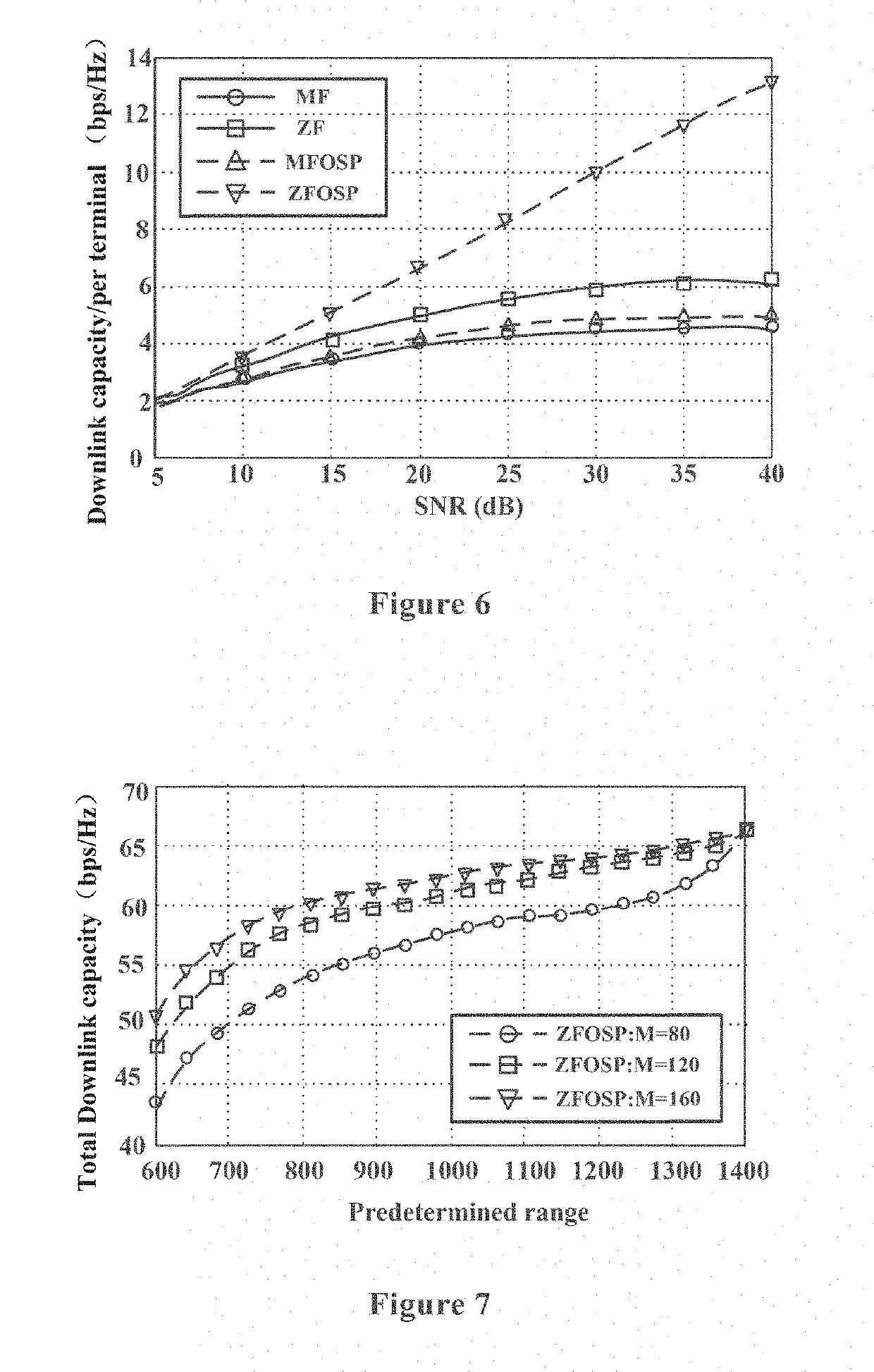Device and method for wireless communications
a wireless communication and wireless communication technology, applied in the field of wireless communication, can solve the problems of limited system performance of large-scale mimo system, inability to effectively distinguish pilot signals, and lack of orthogonal pilots, so as to reduce the pollution of pilots
- Summary
- Abstract
- Description
- Claims
- Application Information
AI Technical Summary
Benefits of technology
Problems solved by technology
Method used
Image
Examples
first embodiment
[0049]FIG. 1 illustrates a block diagram of a structure of an apparatus 100 for wireless communications according to an embodiment of the present disclosure. The apparatus 100 includes: an information acquiring unit 101, configured to acquire channel information for transmission objects and non-transmission objects of wireless communications, where transmission by the transmission objects is controlled by the apparatus 100 and transmission by the non-transmission objects is not controlled by the apparatus 100; and an interference alleviating unit 102, configured to alleviate, based on the channel information for the transmission objects and the non-transmission objects, interferences to the non-transmission objects.
[0050]For example, in cellular mobile communications, the apparatus 100 may be a base station device, the transmission objects are user equipments in a cell where the apparatus 100 is located, and the non-transmission objects are user equipments in a cell served by anothe...
second embodiment
[0080]FIG. 3 illustrates a block diagram of a structure of an apparatus 200 for wireless communications according to another embodiment of the present disclosure. Besides the components shown in FIG. 1, the apparatus 200 further includes: an object determining unit 201, configured to determine the non-transmission objects according to parameters related to interferences to the non-transmission objects, where the related parameters includes at least one of geographical locations of the non-transmission objects and signal reception situations of the non-transmission objects, and the interference alleviating unit 102 is configured to take the non-transmission objects determined by the object determining unit 201 as the non-transmission objects to which interferences are considered to be alleviated.
[0081]The apparatus 200 can appropriately select non-transmission objects to be considered during the calculation of interference alleviating by incorporating the object determining unit 201,...
third embodiment
[0095]In the following, an apparatus 300 for wireless communications according to another embodiment of the present disclosure is described with reference to FIG. 8, which illustrates a block diagram of a structure of the apparatus 300. The apparatus 300 includes: a first grouping unit 301, configured to divide pilot sequences for wireless communication into a cell center pilot group to be used for communication devices in a center of a cell and a cell edge pilot group to be used for communication devices in an edge of the cell; a second grouping unit 302, configured to divide the cell edge pilot group into multiple cell edge pilot sub-groups which do not overlap with each other; and a pilot sub-group allocating unit 303, configured to allocate different cell edge pilot sub-groups to neighboring cells, where the pilot sequences contained in the cell center pilot group are multiplexed by neighboring cells.
[0096]For example, the apparatus may be implemented as any type of server for p...
PUM
 Login to View More
Login to View More Abstract
Description
Claims
Application Information
 Login to View More
Login to View More - R&D
- Intellectual Property
- Life Sciences
- Materials
- Tech Scout
- Unparalleled Data Quality
- Higher Quality Content
- 60% Fewer Hallucinations
Browse by: Latest US Patents, China's latest patents, Technical Efficacy Thesaurus, Application Domain, Technology Topic, Popular Technical Reports.
© 2025 PatSnap. All rights reserved.Legal|Privacy policy|Modern Slavery Act Transparency Statement|Sitemap|About US| Contact US: help@patsnap.com



